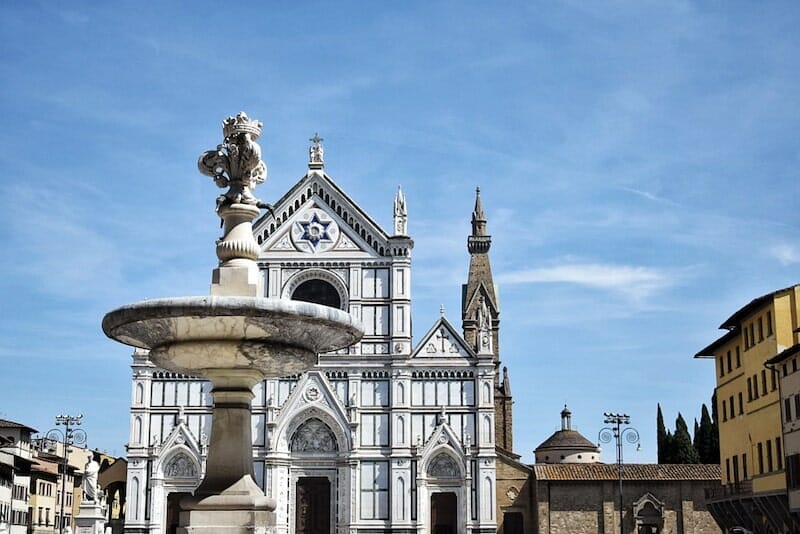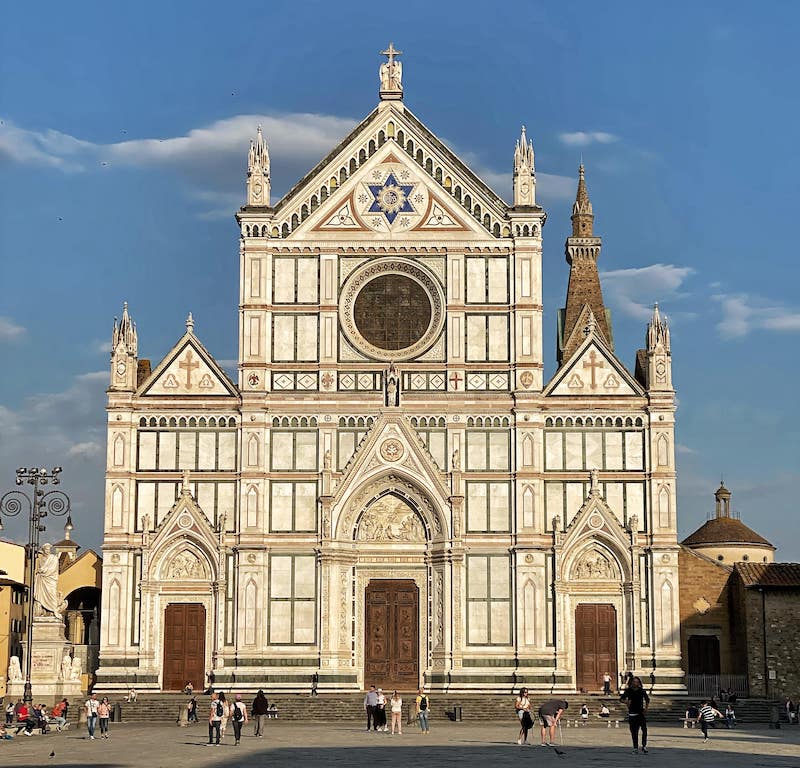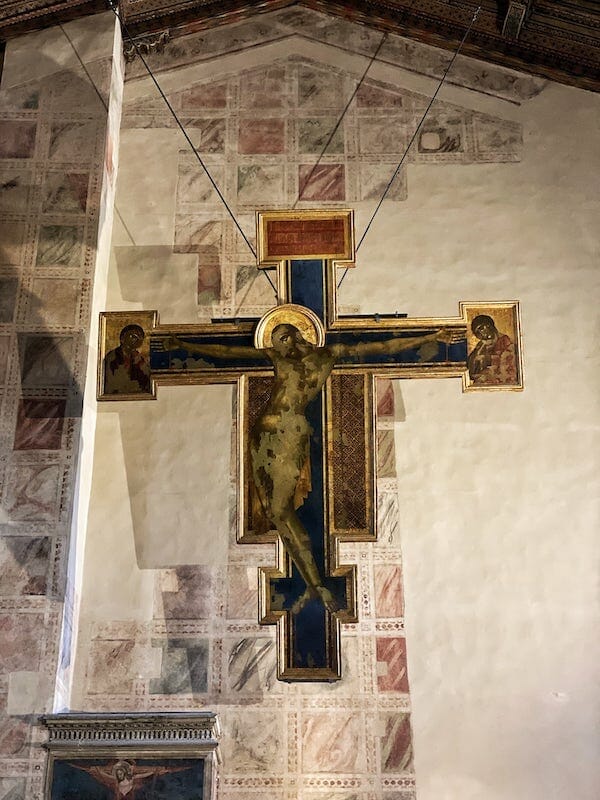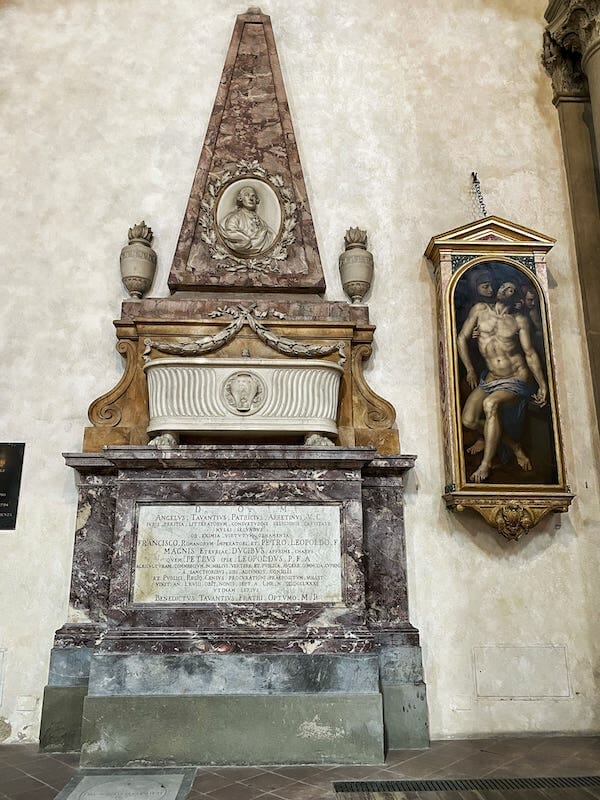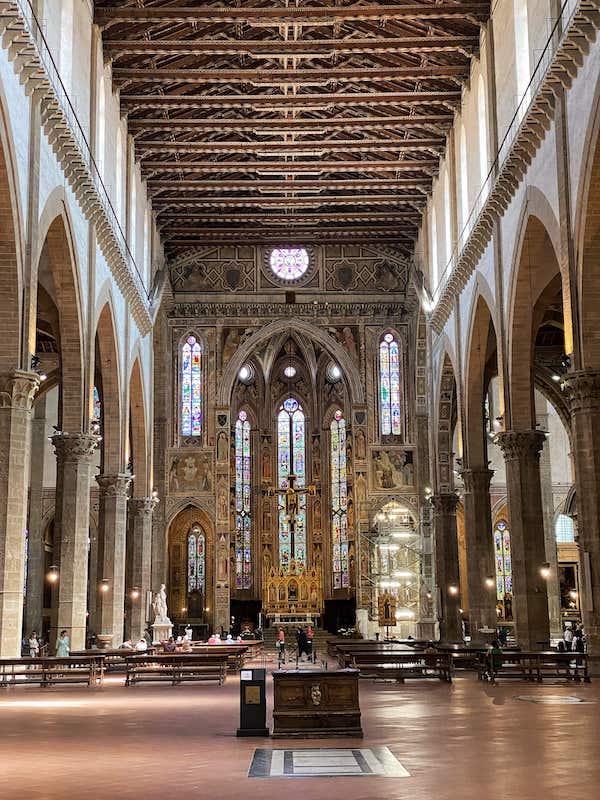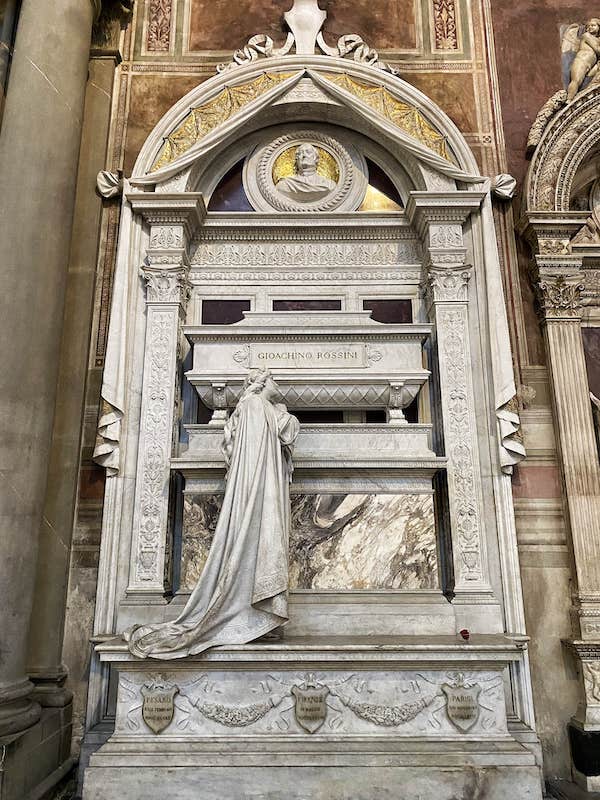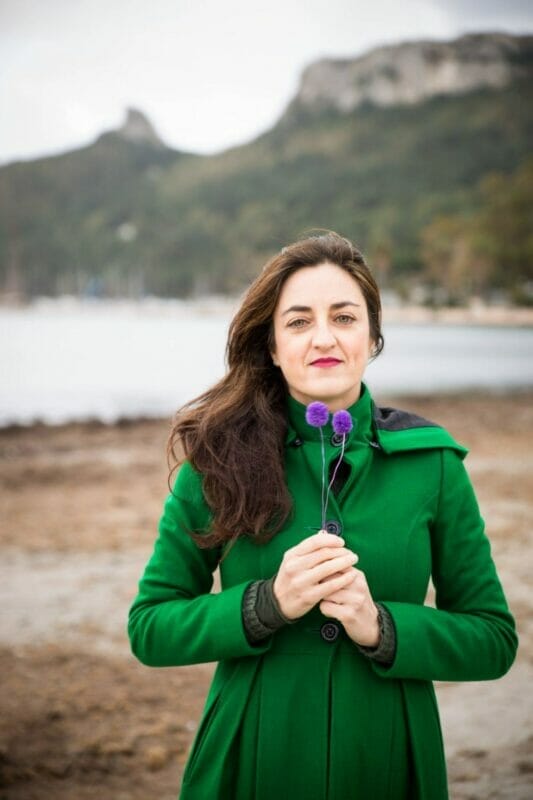The Basilica of Santa Croce is the world’s largest Franciscan church and was built in the Middle Ages. At the beginning of the Renaissance, it was a renowned theological school in which Dante Alighieri was a young student.
The church is situated in the homonymous square, to complement the surrounding cityscape. A landmark since the Renaissance era, this particular Basilica is one to visit, to appreciate its unique external profile.
Pronounced as the ‘Temple of the Italian Glories’, over 15,000 people are buried there, among them Michelangelo, Galileo Galilei, and Machiavelli. It is also a fundamental beacon of faith, often associated with St. Francis of Assisi, Italy’s patron saint since 1939.
Read on for an extensive guide to the Basilica di Santa Croce, including its history, what to see when you visit the complex, and practical information for visiting.
Don’t forget to read my posts The Best Things To Do In Florence and The Most Beautiful Churches In Florence.
The History Of The Basilica Di Santa Croce, Florence
The Basilica di Santa Croce has always been closely connected with the religious orders of the Franciscans who established themselves around 1228. The original structure of the church was enlarged around 1250 but it was too small to accommodate all of its previous congregates. In 1294, the project for the construction of the present church began.
Arnolfo di Cambio, a great renovator of Florence at the time, laid the first stone in 1295. This was going to be a masterpiece of Gothic art. The design was based on spatial grandiosity, and the structural elements were carried out with rational clarity.
Built according to the plan of an Egyptian cross in the shape of a T, the interior is divided into three naves, a chancel, and a transept full of chapels.
The walls of chapels and the entire church were covered in frescoes by Giotto and his school, who also designed the luminous stained glass windows. The church was finished in 1442 and it was consecrated by Pope Eugene IV. It was then that Santa Croce was born as the ‘church of the Florentine citizens’.
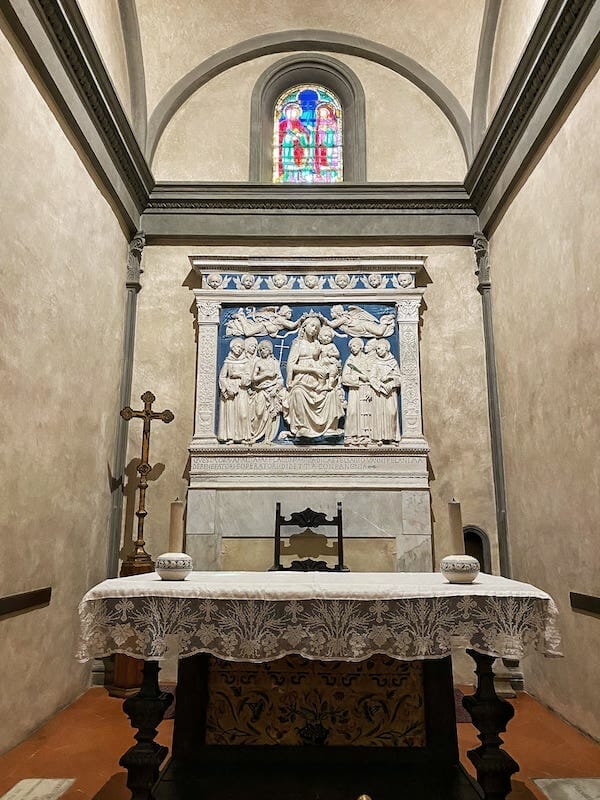

In 1566, Duke Cosimo I de Medici commissioned Giorgio Vasari to renew the convent churches including Santa Croce. Vasari transformed the church with fourteen monumental and symmetrical altars that were erected along the aisle walls – earlier frescoes and chapels were destroyed.
He set a large canopy above the altar for the Eucharist, thus transforming this section into a focal point of the whole sacred arrangement; Christ’s true presence was restated in the consecrated host.
The basilica has twelve chapels with classic Gothic expressions: umbrella ceilings and slim, high windows. Above the apse of the church was a bell tower, which was struck down in 1512 by lightning. It was rebuilt in 1847 by Gaetano Baccani, this time next to the sacristy.
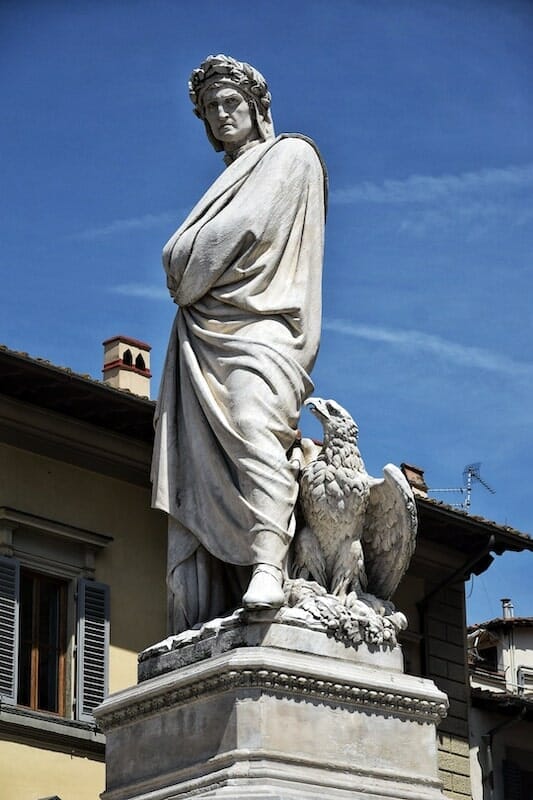

Over the centuries Santa Croce Basilica became a ‘lieu de mémoire’. It had always upheld its status for the fallen. To reinforce its role as Italy’s Pantheon, the decision was taken to use a part of its under-croft to honor the memory of those who had ‘fallen for the Fascist ideal.’
Similarly, during the aftermath of World War II, the area was transformed and dedicated to those Florentines who had ‘fallen for the fatherland since the First World War’.
Santa Croce was elevated to the rank of Basilica in 1933. The building was severely damaged by the flood that hit Florence in 1966. The water entered the building bringing mud, pollution, and heating oil. The damage to the building and art was severe and it took several decades to repair.
What To See In The Basilica Di Santa Croce, Florence
Basilica di Santa Croce’s unique façade
The Basilica di Santa Croce’s exterior remained unfinished for more than three centuries, its bare limestone surface apparent to Florentine dwellers. It was not completed until 1865, commemorating the fifth centenary of Dante’s birth.
The length of the building is 115 meters (more than 377 feet) and its width is 38 meters (124.6 feet). It has a Neo-Gothic style, with three cusps being covered with bichrome marbles. The architect Niccolò Matas presented a design inspired by a long-lost work of Simone del Pollaiolo called il Cronaca.
Interestingly, his tomb can be located outside the church: the memorial gravestone is located in the churchyard in front of the main portal.
You’ll notice a prominent Star of David at the top. There are several theories pertaining to the star design, but the 6-pointed star has been used in many religions as a figure of faith. An impressive blue interior pervades the star, with embellishments decorated with Prato marble, a fine example of Renaissance materials.
The exterior of the brick is with Pietra serene (a type of polished limestone) and it displays three rose windows and two doors: Gesù e Maria doors to the left of the center, and above it a 14th-century trefoil oculus, and the Foundling Hospital door to its right.

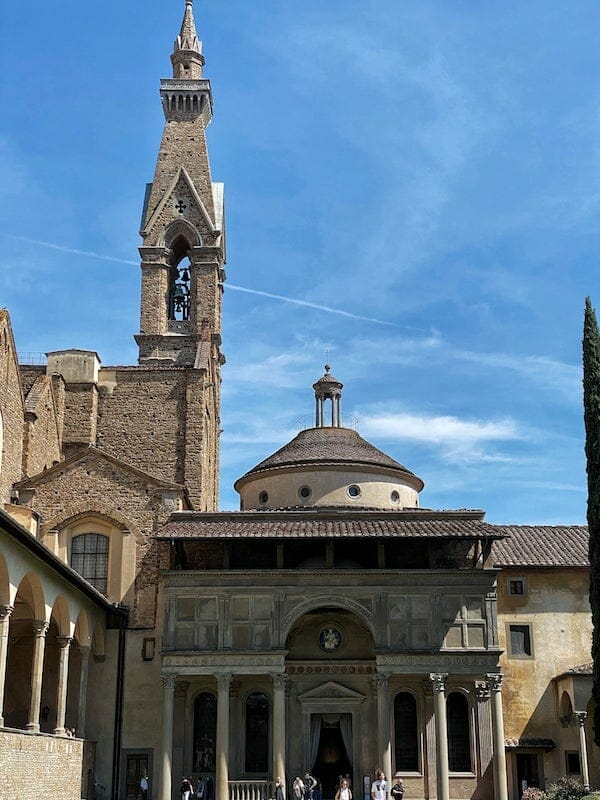
Cloisters
There are three cloisters: Arnolfo’s, Brunelleschi’s, and a smaller one known as the Ancient cloister. The Pazzi Chapel designed by Brunelleschi is a jewel of Renaissance architecture. It features decorations by Desiderio da Settignano and Luca and Andrea Della Robbia.
The room was commissioned in 1429 but work didn’t begin until 1442 and wasn’t quite complete at the time of Brunelleschi’s death in 1446. Its final form was never realized, yet its bare interior is quite sublime.
Monumental Artworks
The artworks inside are an expression of Santa Croce’s magnificence, holding Cimabaue’s preserved crucifix, the Marble Pulpit by Benedetto da Maiano and a picture of the Last Supper which set the precedence of paintings to come, only to be broken by Leonardo da Vinci’s interpretation.
The Stories of the true Cross by Angolo Gaddi painted in the second half of the 14th century can be visible when approaching the high altar. A triumph of colors is created in the apse by alternating brilliant figures of stained glass windows and bright gradients.

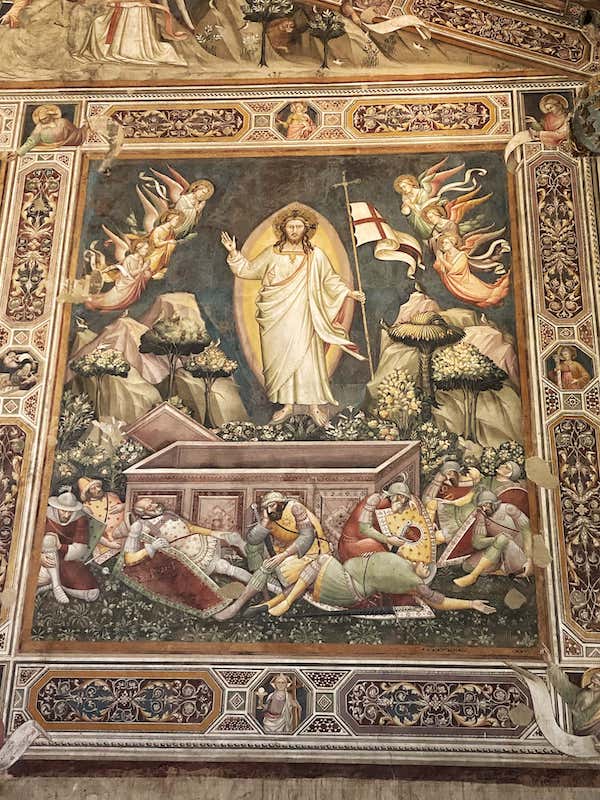
The stunning Annunciazione near the Cavalcanti chapel is an exquisite gilded limestone high relief, expressing a quiet intimacy of emotions. Donatello’s wooden Crucifix is another wonderful site to see.
Located in the Bardi Vernio Chapel, artist rival Filippo Brunelleschi called it ‘a peasant on the cross’, as he carved his Crucifix to show Donatello how Christ should rightfully appear. His magnificent version can be found in the Church of Santa Maria Novella.

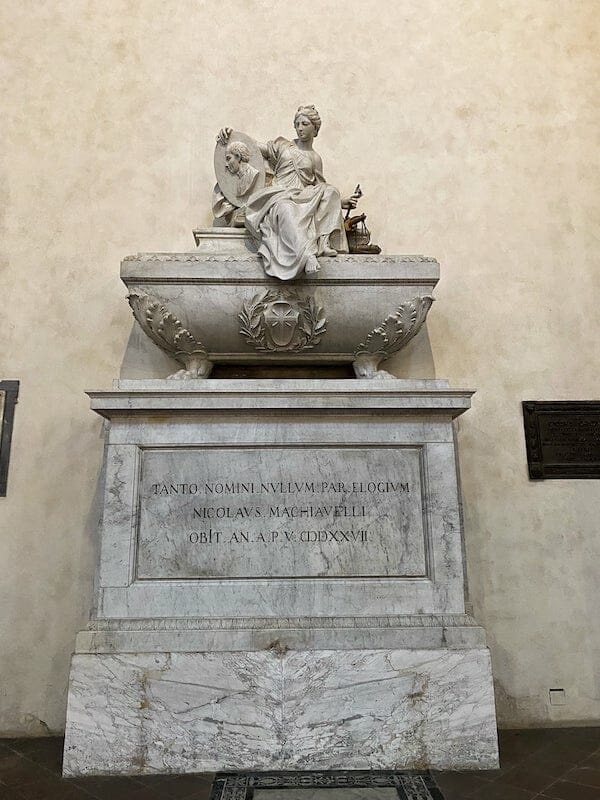
Funerary monuments
The burial tombs of Leonardo Bruni and Carlo Marsuppini, both Chancellors of the Florentine Republic, were key for Santa Croce’s transition to the role of guardian of the city’s glories. Santa Croce transformed from the city’s Pantheon into the Pantheon of the Italian nation.
Since then it has been used as a burial place for wealthy citizens of Florence: Michelangelo (his tomb was designed by Vasari), Alberti’s grave designed by Antonio Canova, Vittorio Alfieri, Bruni, Rossini, Bonaparte, Ghiberti, and Ugo Foscolo.
There was supposed to be a grandiose monument for Dante Alighieri, but when he died, his body remained in Ravenna, where he was in exile.
Galileo Galilei was originally buried in 1642 at the Novitate Chapel under the Campanile. He was not allowed a Christian burial inside the church because he asserted that the Earth revolved around the sun and thus was excommunicated by the Church.
95 years later, his body was moved to a marble sarcophagus inside Santa Croce. He is now buried directly across from Michelangelo’s monument, representing a spiritual tie in the afterlife between the two Tuscan greats.
Galileo’s original tomb had three standing female forms representing Astronomy, Geometry, and Philosophy. When his body was moved, a third coffin was discovered: historians knew Viviani (his pupil) was buried with him but not that his daughter Suor Maria Celeste was buried with him too.
Practical Guide
Basilica di Santa Croce opening hours
The Basilica of Santa Croce is open from Monday to Saturday from 9:30 am to 5:00 pm. On Sundays and religious holidays (Epiphany on January 6th, Assumption on August 15th, All Saints on November 1st and the Immaculate Conception on December 8th), the church is open from 12:30 pm till 5:45 pm. It is closed on January 1st and December 26th.
Best time to visit
There are a few times of the day when it is best to visit the church to avoid swarming crowds: early morning when it opens (9.30 am), in the afternoon when it’s hot outside or most groups are having lunch (ie between 1:00 and 2:00 pm) or just before closing (last entry time is 4:00 pm).
Visiting the site in its entirety will take at least one full hour. But you can tailor your tour through a third-party site, to extend your stay and enrich your experience.
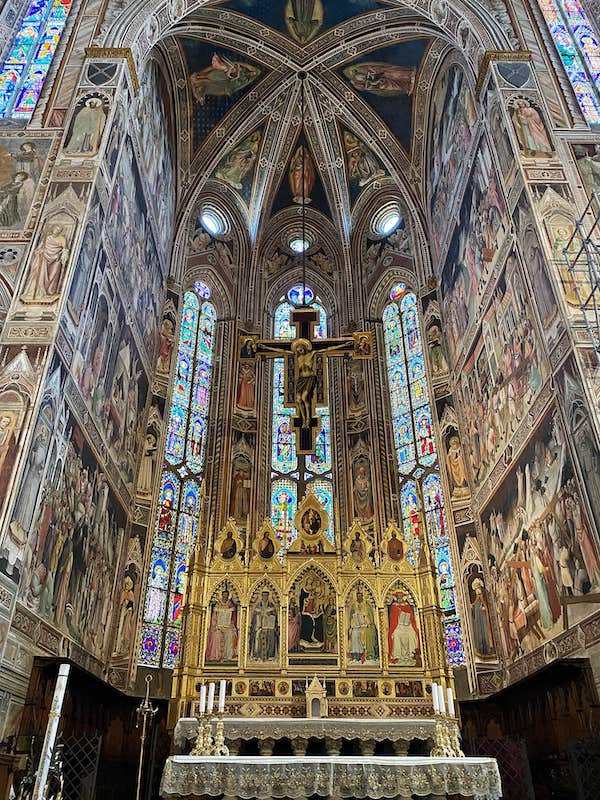
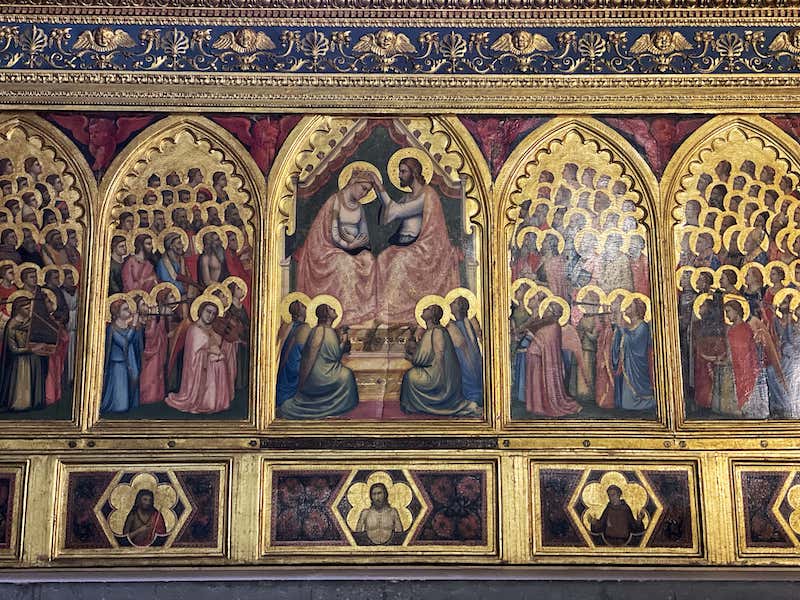
Basilica di Santa Croce tickets
A full-price ticket costs €8. A reduced price ticket is available for visitors between 12 and 17 years of age at €6 and there is free admission for children up to 11 years accompanied by an adult, residents of Florence and disabled travelers and their companion.
For a family ticket the full price is €8. Audio-giudes are available in Italian, English, French, Spanish and German for €4.
You can buy your tickets online on the official website of the church (in which case there is an additional €1 booking fee) or directly at the door.
Admission is free for anyone wishing to pray or attend a religious service. Admission is also included in the Firenzecard.
Should you get a guided tour?
My friend and I visited by ourselves and we regretted it. We walked through the church probably too quickly and were about to leave when we asked for information to one of the persons at the door and that’s when we realized we had missed all the important funerary monuments, so we walked back in!
This is to say, you are actually better off hiring a guide to visit the Basilica di Santa Croce of Florence. As there is a lot to see, perhaps a small guided tour of under 10 persons would be great to get insider knowledge and a full grasp of the edifice.
They may show you detailed works with a greater context, the guide will take you to visit the 16 chapels, as well as nearly 300 tombs.
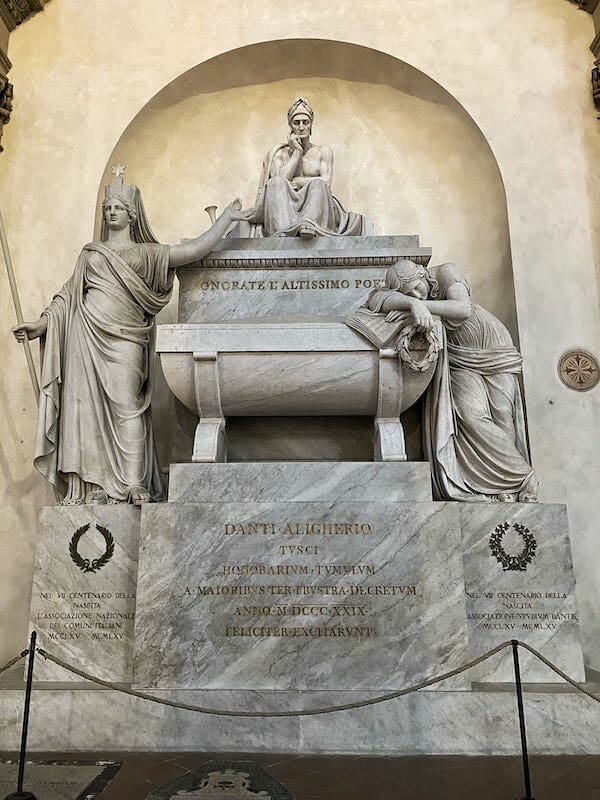
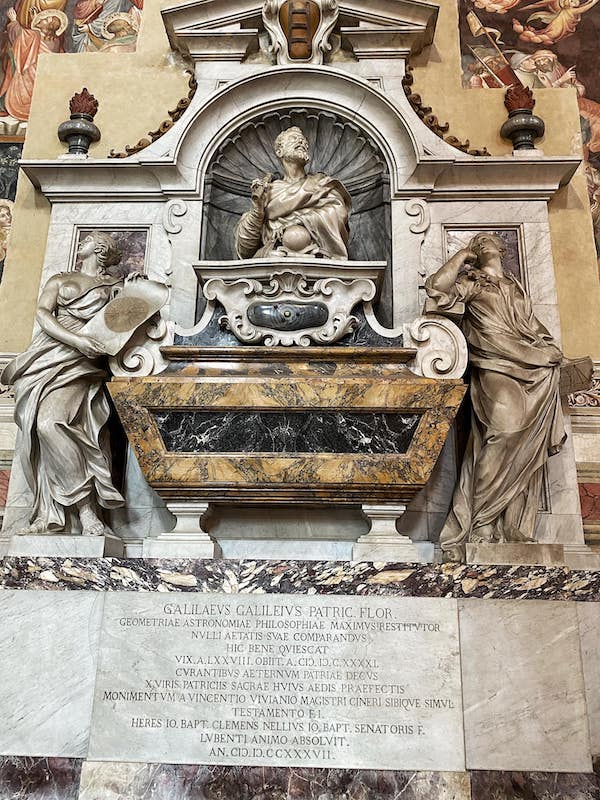
Guided tours will also include an admission ticket. This is a selection of the best available options:
Florence Santa Croce Church Tour – this guided tour lasts one hour and shows you the highlights of the church.
Florence: Santa Croce Basilica Guided Tour and Entry-Ticket – a small group tour that lasts 75 minutes.
Florence: 2 Hours Santa Croce Guided Tour with Entry Ticket – the most comprehensive tour, it lasts two hours.
Dress code
The monumental complex of Santa Croce is a consecrated place for prayer and worship. Bare legs and shoulders are not tolerated and you have to be dressed modestly for your visit. Just wear a dress or skirt that cover your knees, and a shirt (no tank-top).
Men should avoid wearing shorts and tank tops too.
The complex can get very cold in winter (it was actually pleasantly cool even in the middle of a heat wave when we visited), so warm clothing is recommended. Comfortable shoes in every season are recommended as centuries-old steps and floors are often uneven and can get quite slippery.
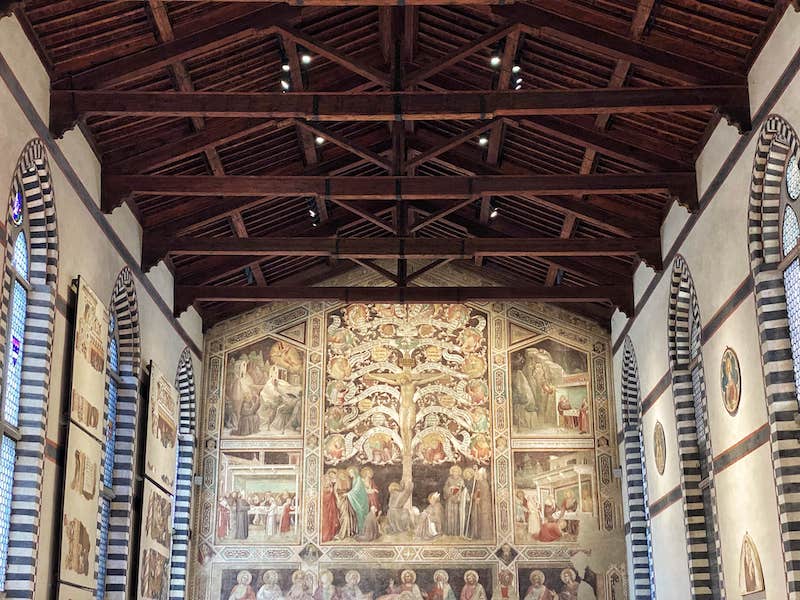
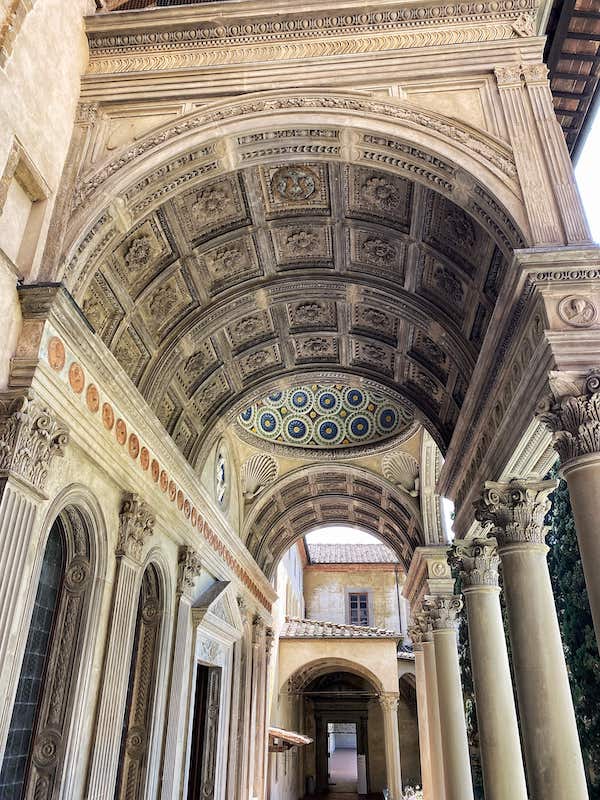
Is photography allowed inside the Basilica di Santa Croce?
Photography with a flash or a tripod is not allowed. Otherwise, you can take photos!
Toilets
Toilets are located in the first cloister, close to the exit. Visitors can notify a member of staff to access the disabled restrooms.
Disabled access
For people with difficulty walking and wheelchair users, the entrance to the Basilica is facilitated by a ramp, located on Largo Bargellini. You can enter the cloister on Piazza Santa Croce by the raised platform at the entrance.
Visitors with impaired sight or hearing may access the site with guide dogs on condition that they can produce a statutory declaration.
How to get there
The Basilica di Santa Croce complex is situated in the heart of Florence, in one of its oldest and most characteristic neighborhoods. From the Santa Maria Novella station, you can reach the church on foot in less than 20 minutes. The visitor entrance and ticket office are on the north side of the basilica in Largo Bargellini.
Further Readings
If you are traveling to Florence, these other posts will be useful:
- How To Get From Rome To Florence
- The Perfect 3 Days In Florence Itinerary
- A Guide To The Basilica Di Santa Maria Novella
- How To Get Boboli Gardens Tickets
- How To Get Tickets To Pitti Palace
- How To Get Tickets To The Uffizi Gallery
- How To Get Galleria Dell’Accademia Tickets
- How To Get Florence Duomo Tickets
- How To Get Palazzo Vecchio Tickets
- A Guide To Visiting Giotto’s Bell Tower
- How To Make The Most Of One Day In Florence
- How To Make The Most Of Florence At Night
- 13 Best Day Trips From Florence
- A Wonderful Florence To Pisa Day Trip
- The Perfect Day Trip From Florence To Cinque Terre

